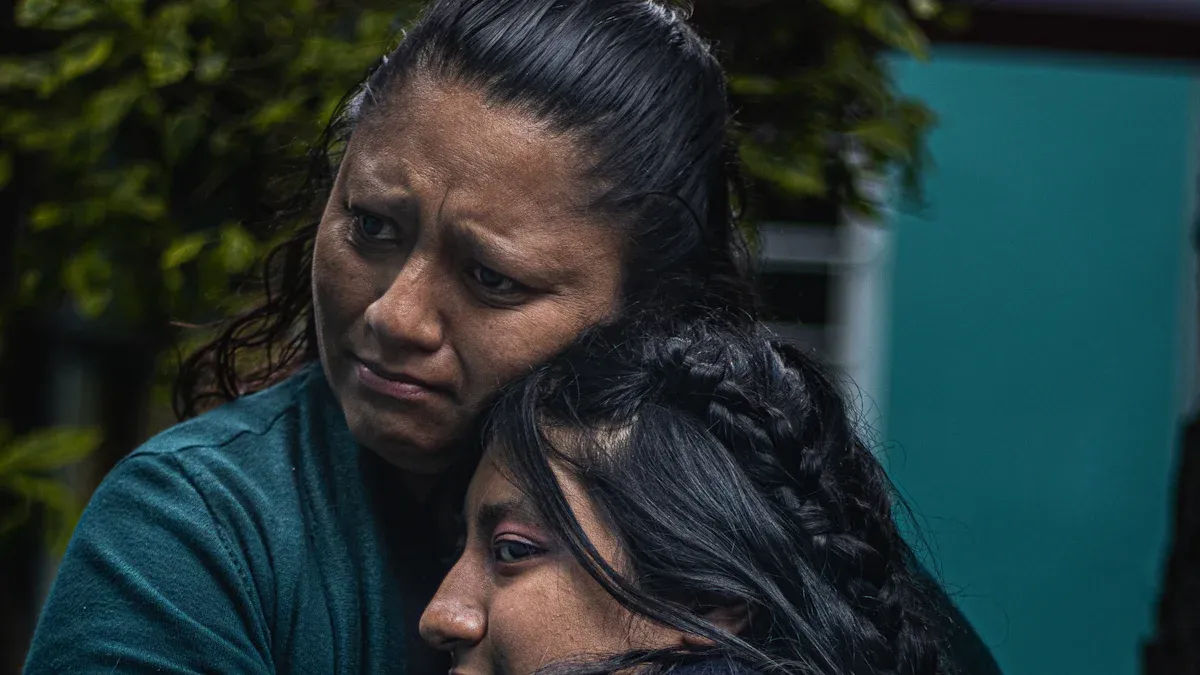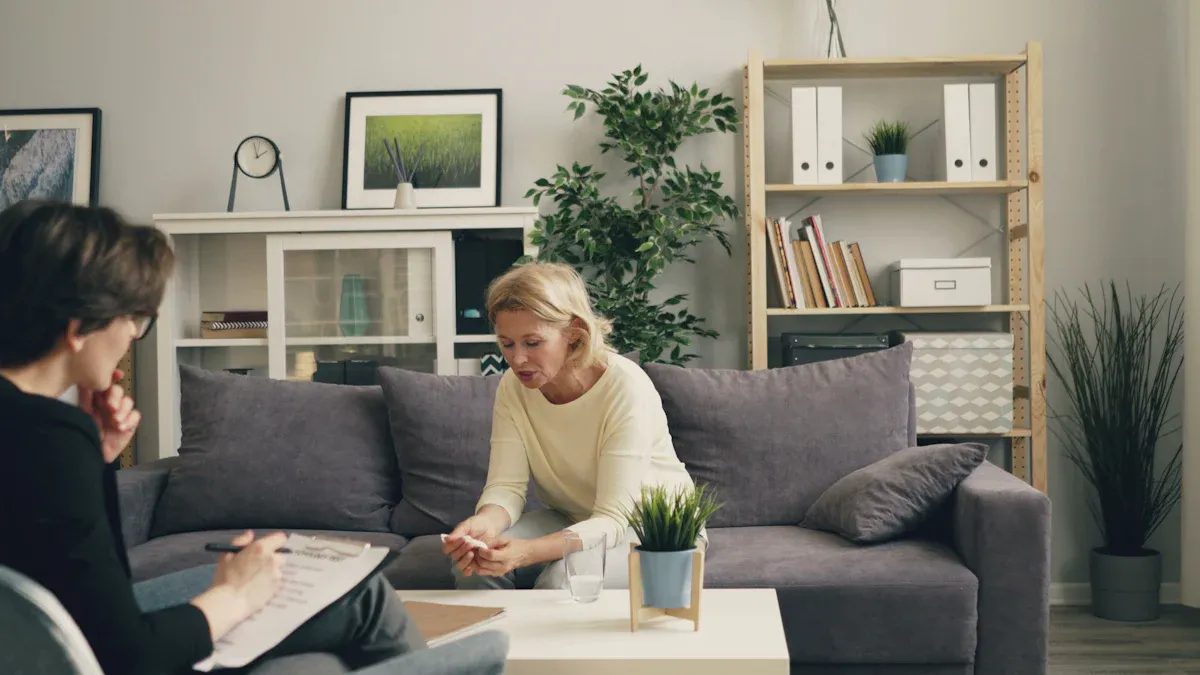Empowering Domestic Abuse Survivors Through Therapy

You have the power to heal and feel strong after abuse. Therapy gives hope to domestic abuse survivors, helping you build self-esteem and find emotional healing. Many survivors experience emotional pain, depression, and anxiety. Therapy addresses these wounds by teaching coping strategies and rebuilding trust in yourself.
Many survivors talk about growing emotionally and feeling hope again with therapy, even if the abuse hurt them deeply.
Key Takeaways
Therapeutic Benefits: Therapy helps survivors heal from trauma, rebuild self-esteem, and develop healthy coping strategies for emotional recovery.
Breaking Cycles: Treatment focuses on breaking the cycle of abuse through empowerment and resilience building.
Safety Planning: Safety planning and support networks are crucial components of effective therapy.
Resource Access: Overcoming shame and finding qualified domestic violence therapists are important steps toward healing.
Impact on Domestic Abuse Survivors
Emotional and Psychological Effects
After domestic abuse, survivors often experience profound psychological trauma. Many deal with anxiety, depression, and post-traumatic stress. These effects can manifest as sleep disturbances, eating changes, or suicidal thoughts.
Common Emotional Effects:
Anxiety disorders and panic attacks
Depression and mood disturbances
Low self-esteem and worthlessness feelings
Shame, guilt, and persistent fear
Substance abuse as coping mechanism
You are not alone. More than half of women in mental health care have faced intimate partner violence. Abusers often use gaslighting tactics to undermine your reality.
Not Sure If You Are Been Gaslighted?
Sometimes it's hard to recognize gaslighting and emotional manipulation. Our Gaslighting Check app helps you identify patterns and provides personalized guidance based on your specific situation.
Try Gaslighting Check App NowDomestic violence survivors often experience both visible injuries and chronic health issues. Headaches, chronic pain, and fatigue are common, even years after abuse. Pelvic pain and reproductive health problems may also occur.
Physical Injuries | Symptoms Without Clear Cause | Other Health Issues | Impact |
|---|---|---|---|
Bruises, cuts, burns from violence | Headaches, pelvic pain, fatigue, stress-related symptoms | Pregnancy complications, infections | Trouble working, income loss, social isolation, lower symptoms of functioning |
Empowerment Through Domestic Violence Therapy

Restoring Self-Esteem
Domestic violence therapy helps rebuild self-worth after abuse. Cognitive Behavioral Therapy (CBT) helps change negative self-perceptions, while Dialectical Behavior Therapy (DBT) uses mindfulness for emotional regulation and self-awareness.
Trauma-focused therapies like EMDR and prolonged exposure therapy address deep psychological wounds. Narrative therapy helps you reclaim your story, recognizing that you are more than your trauma. Research shows that survivors report increased confidence and self-respect following empowerment-based therapy approaches.
Processing Trauma and Building Safety
Trauma processing is central to domestic violence therapy. Trauma-Focused Cognitive Behavioral Therapy (TF-CBT) is particularly effective, using graduated exposure and coping skills development. These approaches help manage triggers and develop healthy emotional responses.
Safety planning remains paramount. Therapists work with survivors to create comprehensive safety plans that include risk assessment, emergency contacts, and resource connections. Research demonstrates that safety planning reduces revictimization risk and improves mental health outcomes.
Building Resilience
Domestic violence therapy focuses on developing resilience - the ability to recover and thrive after trauma. Trauma-informed approaches provide safe therapeutic environments where survivors regain agency and control.
Key principles that help you build resilience in therapy through research-based programs:
Trust and transparency: Your qualified domestic violence therapist is honest and clear about accountability measures.
Connectedness: You build support alliance with others in your community.
Collaboration: You and your therapist work together on coping and anger management.
Empowerment, voice, and choice: You control your healing journey through education and resources.
Respect for diversity: Your unique story and culture matter in any relationship context.
Types of Therapy for Survivors

Individual and Group Therapy
Individual therapy provides private, personalized treatment for PTSD, depression, and anxiety. This approach allows for goal-setting and trust-building in a confidential environment.
Group therapy connects survivors with others who share similar experiences. These sessions reduce isolation while teaching interpersonal skills and healthy boundaries.
Aspect | Individual Therapy | Group Therapy |
|---|---|---|
Effectiveness | Strong PTSD, depression reduction | Peer support, social learning |
Dropout Rates | Higher (~37%), unique social benefits |
Trauma-Informed and CBT Approaches
Trauma-informed therapy and cognitive behavioral therapy form the foundation of evidence-based treatment. Trauma-informed care ensures safety and respect, allowing survivors to control their healing pace.
Cognitive behavioral therapy helps modify negative thought patterns and behaviors resulting from abuse. This approach teaches emotional regulation and trigger management while building self-efficacy and confidence.
Trauma-informed therapy asks "What happened to you?" rather than "What's wrong with you?" This perspective promotes understanding and empowerment.
Family and Supportive Counseling
Family counseling helps rebuild healthy relationships and communication patterns. It teaches boundary-setting and conflict resolution while supporting children's emotional development and resilience.
Supportive counseling groups provide practical guidance, educational resources, and peer connections. These services complement individual therapy by addressing housing, childcare, and other essential needs.
Overcoming Barriers for Domestic Violence Survivors
Addressing Stigma and Shame
Survivors often face shame and self-blame that prevent help-seeking. Societal myths and victim-blaming compound these barriers. Stigma stems from misconceptions about intimate partner violence and survivor choices.
Therapy helps process shame while building self-compassion. Community education and trauma-informed support reduce stigma by promoting understanding and encouraging help-seeking behaviors.
Access and Safety Considerations
Accessing therapy presents unique challenges for domestic abuse survivors. Abusers may control finances, transportation, or information access. Rural areas often lack specialized services, requiring extensive travel to reach qualified domestic violence therapists.
Safety planning is essential before beginning therapy. Comprehensive safety plans include secure communication methods, private therapy locations, and emergency protocols. Digital safety measures protect survivors using telehealth services.
Safety Tips:
Memorize your safety plan details
Establish code words with therapists
Use secure, private devices for telehealth
Understand confidentiality protections
Finding Resources and Support
State coalitions connect survivors to local therapy services and qualified domestic violence therapists. The National Domestic Violence Hotline provides confidential support and resource referrals. Support groups offer peer connections and practical coping strategies for daily life challenges.
Resource/Aspect | Description/Effectiveness |
|---|---|
State Coalitions | Connect you to local survivor support, qualified domestic violence therapists, and legal protection services while building community alliance. |
National Helplines | Offer confidential guidance and connect you to safe support while addressing perpetrator accountability and violence concerns through education. |
Support Groups | Reduce isolation and help you learn coping skills while working on emotional healing, stress management, and breaking the cycle of abuse. |
Qualified Professionals | Trained in abuse counseling through research-based approaches, they provide safe therapy while building therapeutic alliance and addressing psychological needs. |
Online Directories | Help you find qualified domestic violence therapists and programs, but always check for privacy, safety, and legal protection measures. |
Safety Planning | Ensures you are ready and protected before starting therapy while addressing perpetrator behavior and building accountability measures through the duluth model. |
You are not alone in dealing with intimate partner violence and childhood trauma. Many survivors face these same problems while seeking help-seeking support and emotional healing. With the right help from qualified domestic violence therapists, you can find safety, healing, and hope while building self-esteem and breaking the cycle of abuse through behavior change programs.
You have the strength to heal and move forward from intimate partner violence while working on emotional healing and psychological recovery. Therapy can help you reclaim your life and find hope again through cognitive behavioral therapy and alliance building. Many survivors share that therapy helps them feel safe, build trust, and restore self-esteem while addressing perpetrator accountability and violence patterns through education and the duluth model approach.
You can regain your sense of safety and autonomy while building indicators of survivor well-being and community involvement.
Therapy supports you in building new support alliance and relationship networks while working on anger management and stress reduction.
Creative approaches like art therapy help you express and heal from childhood trauma and intimate partner violence while developing coping strategies.
You deserve joy and a brighter future free from violence and perpetrator control. Every step you take brings you closer to peace and happiness through emotional healing, behavior change, and building the strength of your support systems while ensuring legal protection and community accountability.
FAQ
What should you expect during your first domestic violence therapy session?
You will meet a qualified domestic violence therapist trained in intimate partner violence and trauma approaches. The therapist listens to your story and cares about your safety while building the therapeutic alliance and addressing perpetrator accountability. You talk about how you feel and what you need while working on emotional healing and stress management. The therapist helps you make goals for healing and feeling stronger through cognitive behavioral therapy and behavior change programs. You can ask questions and learn about trauma-informed therapy, breaking the cycle of abuse, legal protection resources, and community involvement opportunities while building self-esteem and addressing anxiety.
How do support groups help domestic abuse survivors?
Support groups give you a safe place to talk about intimate partner violence and childhood trauma while building alliance connections with others. You meet others who have been through similar things and understand violence exposure and perpetrator behavior. These groups share ways to cope with stress and emotional responses while providing support for help-seeking survivors. You learn how to build self-esteem and stop the cycle of abuse through behavior change and accountability measures. You also find hope from others while working on psychological healing, anger management, and developing indicators of survivor well-being through community involvement and education programs.
Can therapy help you rebuild self-esteem after abuse?
Yes! Therapy helps you see your strengths and worth while addressing intimate partner violence and childhood trauma through emotional healing approaches. You learn to trust yourself again while building the therapeutic alliance and working on perpetrator accountability issues. Individual therapy and trauma-informed approaches guide you as you heal from violence and psychological distress through cognitive behavioral therapy and stress management. You feel more empowered and your mental health gets better while building alliance support, legal protection awareness, and community involvement through research-based programs.
What are some signs of survivor well-being after therapy?
You may notice you cope better with stress and anxiety while feeling more confident about your emotional responses and psychological health. Your relationship dynamics get stronger and you feel safer from violence and perpetrator influence while building alliance support. You have less anxiety and symptoms of depression while feeling more balanced and emotionally stable. You start to see life in a positive way while working on behavior change and breaking the cycle of abuse through accountability and self-esteem building. You begin to develop indicators of survivor well-being through community involvement, legal protection awareness, anger management skills, and the strength of your support systems while addressing childhood trauma and intimate partner violence through qualified domestic violence therapists and cognitive behavioral therapy approaches.
How can you find survivor support and resources?
You can call national hotlines or join support groups for intimate partner violence survivors while seeking qualified domestic violence therapists and programs. You can also talk to trained professionals about emotional healing, breaking the cycle of abuse, perpetrator accountability, and legal protection options. Many groups offer support, safety planning, and help for help-seeking survivors while providing education about the duluth model, behavior change, stress management, and community involvement opportunities. You deserve help and a brighter future free from violence while building self-esteem, addressing childhood trauma, managing anxiety and anger, and developing coping strategies through cognitive behavioral therapy and alliance building with qualified domestic violence therapists and research-based resources.